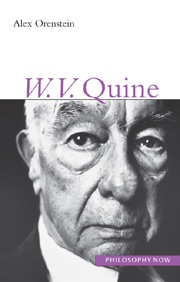2 - Expressing an ontology
Summary
The new way of construing existence claims
Philosophers from earliest times have shown an interest in the nature of existence. However, in the latter half of the nineteenth century there arose a new way of thinking about this subject. Quine was to give it one of its most consistent and thoroughgoing expressions. The basic insight of this new view consisted in seeing the special relation between the word ‘exists’ and the word ‘some’ or any of its paraphrases. In 1874, the Austrian philosopher Franz Brentano claimed that all sentences are merely varieties of existential sentences. He began by equating particular sentences, that is, sentences usually beginning with the word ‘some’, with existence sentences. So the particular affirmative sentence ‘Some man is sick’ was said to be equivalent to the existential claim ‘A sick man exists’ or its paraphrase ‘There is a sick man’. The word ‘some’ is called the particular or existential quantifier and, similarly, the word ‘all’ is referred to as the universal quantifier. Brentano was one of the first to point out that existence claims have a special connection with quantification. To say that a cow exists is the same as to say that something is a cow. Existence claims are really particular/existential quantifications and the phrases ‘some’, ‘there are’ and ‘there exists’ are systematically intertranslatable.
This treatment of existence gives a special significance to the slogan that existence is not a predicate.
- Type
- Chapter
- Information
- W. V. Quine , pp. 11 - 38Publisher: Acumen PublishingPrint publication year: 2002

